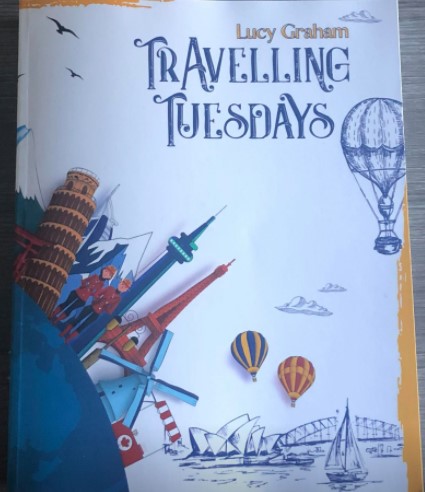Be Otterly Amazing! - Day 406 - Daily Content Challenge
An Otter is a semi-aquatic fish-eating mammal of the weasel family. Otters are known for their long bodies, webbed feet and playful antics. They love to slide down rocks, banks or waterfalls. Unfortunately, otters’ lives are not all fun and games. Competition with fisheries, habitat loss and water pollution threaten their survival.
Otters have dense brown fur. Their hair keeps them warm. They average a million hairs every square inch. Sea otters don’t have that much fat mass or blubber, so without their hair, they would freeze to death in the chilly, Pacific Ocean.
Sea otters are able to carry things in their armpits. They have skin folds under each arm which they use to store any food they find. They also keep rocks in the skin folds. The rocks are used as tools for building as well as cracking open clam shells so they can consume the clams.
Otters are polygamous animals. They mate with more than one partner throughout their lifetime. A male will mate with a female and then leave to mate with others. The female is left to raise the young. Sea otter mothers usually have one offspring. Twins are rare. Did you know otter pups wag their tails when they are happy?
The mom is always with her baby. The baby is licked so intensely by a mom that air bubbles develop in their fur to help the baby float. Sometimes a mother sea otter has to leave to hunt for food. The mom will wrap her baby with kelp so it doesn’t drift away. While floating on her back she will even carry her young on her chest.
Large groups of sea otters will often gather together for naps. This group of sea otters is called a raft. Sea otters often entangle themselves in kelp or giant seaweed to provide anchorage and prevent themselves from floating away. They also hold hands to prevent themselves from drifting away from the raft.
Otters can hold their breath for several minutes under water. Normally the average time it takes a sea otter to take a breath is 2 minutes, but they can hold their breath underwater up to 5 minutes. They can search for food underwater thanks to their enormous lung capacity.
Floating otters stroke their fur creating air bubbles in their coat. This helps them create a waterproof layer just beside their skin. Sea otters love deep dives. When an otter dives deep, the pressure gets higher and the water temperature gets colder. The pressure and cold compresses the oxygen in the air bubbles they created in their fur. Without the oxygen, a sea otter’s body heat would escape in seconds and it could die from the cold.
Otters move very quickly in water. They can travel at speeds of up to 7 mph. Sea otters like to keep their feet and hands out of the water to conserve their body heat. A river otter which is much smaller than a sea otter swims belly-down with their four webbed feet. The sea otter swims belly up with their flippers exposed.
Otters are known for being friendly animals but they keep their distance from humans. When they are aggressive they can bite humans. Like most animals in the wild, otters will fight back when they are confronted or when they feel threatened. Otters can live eight to nine years in the wild but some have lived up to twenty-one years in captivity.
River otters are very curious animals. They have well developed hearing and a sense of smell. They spend most of their day exploring their home range. They are active day and night all year long. In high disturbance areas, they tend to be more nocturnal. They use their long whiskers to locate prey in muddy water.
Freshwater otters rest and sleep on land, either above ground or in a den. On land they must be wary of predators. Bobcats, coyotes, mountain lions, wolves, black bears, alligators and even domestic dogs pose a threat to otters. Otters will produce a loud, staccato “hah” sound to alert other otters to danger. This loud scream can be heard almost a mile away.
These are the sayings on the bookmark called Advice from an Otter.
-
Take time to play
-
Keep your whiskers clean
-
Cherish clean water
-
Be spontaneous
-
Stay active
-
Don’t be afraid to get your feet wet
-
Be otterly amazing!
Here are my comments about each of these sayings.
-
Take time to play - Take a break and take time to play and do things you enjoy.
-
Keep your whiskers clean - This makes me think of gentlemen who have moustaches and sometimes catch a bit of food in them when eating a meal. 🙂 Keep your whiskers clean.
-
Cherish clean water - Be thankful if you have clean water to drink. Let’s not pollute this natural resource. Many communities in the world have to boil their water.
-
Be spontaneous - Have an open and natural manner. Be spontaneous and make decisions without having to know all the details.
-
Stay active - Move more, sit less.
-
Don’t be afraid to get your feet wet - Begin something new. Jump in and don’t be afraid to get started.
-
Be otterly amazing! - Take action and do amazing things!
Have a great day everyone. Be otterly amazing!
# living life abundantly # published author # travelling tuesdays




